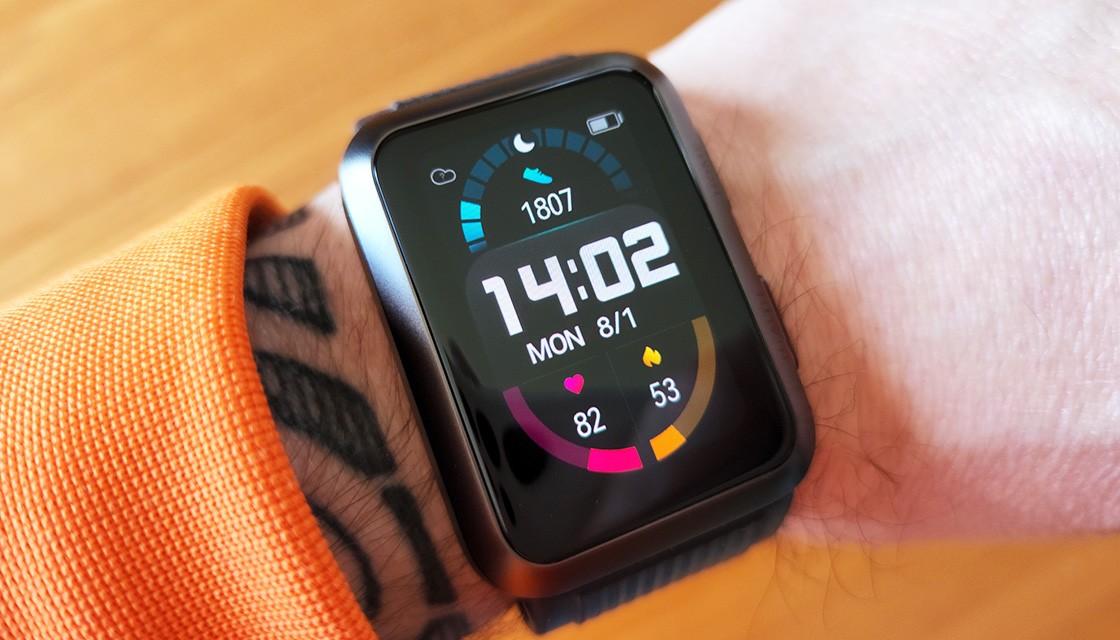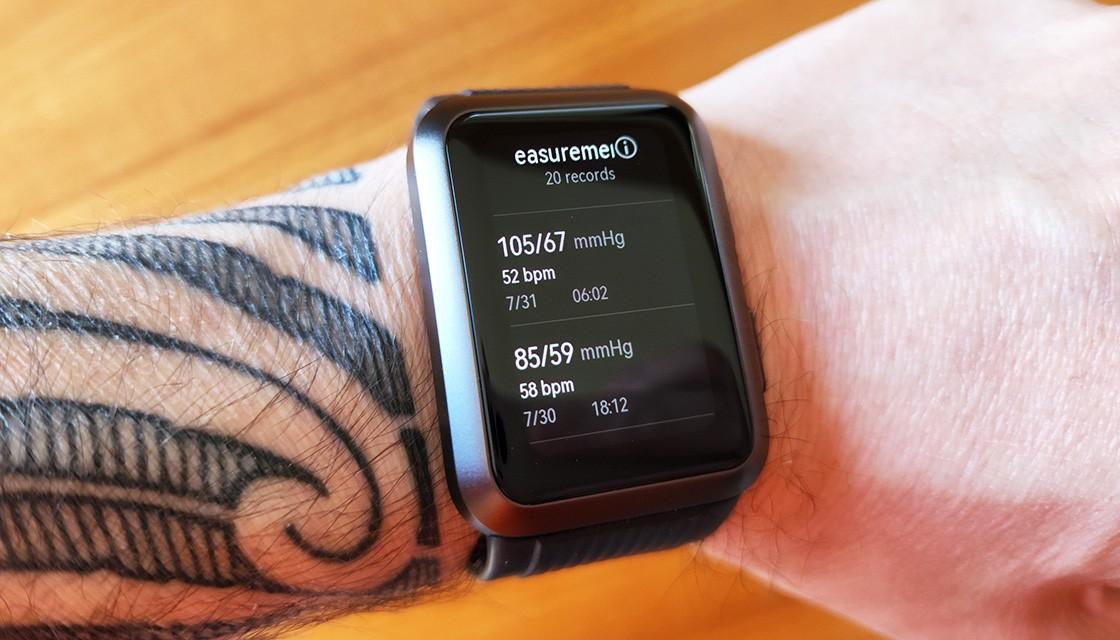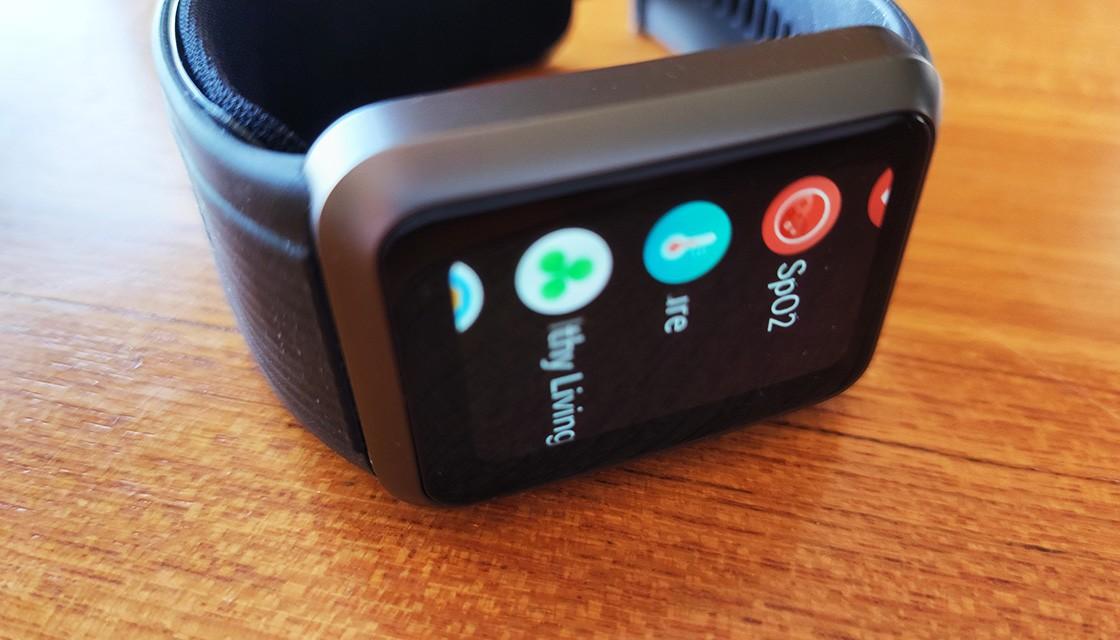
Ever since I got my first Fitbit, I've found the data provided - like monitoring your daily step count and heart rate - has helped me get fit and, more importantly, maintain my fitness. I'm not exactly a slave to the devices, but certainly a grateful recipient.
The Watch D, for the first time, puts blood pressure measurement on your wrist, courtesy of a mini-pump in a detachable, narrow airbag strap.
However, that comes at the expense of some of the style of the company's other watches, or even competitors like Apple and Samsung.
So is the Watch D an option for everyday use for everyone, or is it a specialist wearable designed for a limited audience?
I've been using Huawei's Watch D for a few weeks now and here are my thoughts.
The good
Perhaps most importantly, the ability to check your own blood pressure with a wearable is a good thing, and it's been hailed here by experts.
Using it regularly could help in the early identification of stroke risks, which is Aotearoa's second biggest killer.
Worryingly, there are 9500 strokes experienced by Kiwis each year, with an expectation that number will rise by 40 percent over the next 10 years due to population changes.
The Stroke Foundation believes that 75 percent of strokes are preventable, so this technology could be the difference between life and death.
And it's easy to use, once the fiddly initial setup is done. By default, blood pressure is measured by clicking a button and then confirming on the touch screen, while following some simple guidelines.

It's quick, painless and recorded in the Huawei Health app on your smartphone so you can monitor any trends and if your blood pressure is low, normal or high.
It's also pretty accurate; suffering some unfortunate illnesses in the last month, the feature has given me access to both hospital and doctor blood pressure measurements.
One thing common across the Huawei watches I've used is the impressive screen and the significant battery life.
Huawei's clarity makes the screen easy to read at any time of the day or night, and means even with my ageing eyes I don't need to strain too hard.
The AMOLED colour screen has a resolution of 456 x 280 pixels so while it's not exactly going to replace your phone, it does mean you can easily read messages and notifications your phone receives, providing you set that up on your watch.
Battery life is also above and beyond what I've come to expect from smartwatches, other than the likes of specialist purchases like Garmin's activity range.
With that battery life - I easily got an entire week of usage out of one charge - it enables functionality like sleep analysis to take place.

Yes, other brands also offer sleep analysis, but that's when I charge my smartwatches when they only last for a day - so it's almost useless for some.
I can't be 100 percent certain, but I doubt if there is any watch out there with the quality and colour of screen that Huawei offers that has a battery that lasts as long. It's a major selling point as far as I'm concerned.
It's also incredibly secure on the wrist, courtesy of a clasp system that requires you to measure your wrist first time to get it right, but then offers one-click easy on and off functionality - even if it is a bit bulky. More on that later.
It's also intended as a general fitness tracker, allowing you to record over 70 different sports and activities as well as recording your heart rate, stress, Sp02 levels and more.
Finally it's IP68 water and dust resistant, meaning it should survive a quick dip in the pool - or, if you're like me, wearing it in the shower because you forgot to take it off.

The bad
There's no getting away from the elephant in the room, and that's the cost. While $749 is cheap to potentially identify life-changing issues before they occur, it's also a lot to fork out for a smartwatch which ultimately isn't as much fun to wear as some of Huawei's other offerings.
The issue for me is both the form and thickness of the watch. While a rounded rectangle is hardly unique in the wearables world, there's something more satisfying about wearing smartwatches that look more like watches.
This is where the GT3 and GT Runner excelled and why I've also preferred a round device.
Maybe it wouldn't matter so much to me if the bevels weren't so large. Not only is the case bulky and thick, the black bevel on the screen itself is pretty sizable. While it doesn't make the face hard to read, it does mean there's a lot of unusable real estate on it.
That thickness also means it can get a little uncomfortable while wearing it too. It sticks out quite far from the wrist and if you wear shirts that button around there, you might find it's a little hard to do them up.
Yes, there is a reason why it has to be that thick, I just didn't find it that enjoyable to wear for extended periods.

It also - unsurprisingly - suffers some of the same issues as the rest of the company's range, and that's the ecosystem is a little lacking compared to its competitors.
The Huawei Health app is available on both iOS and Android but it's very limited. It means you can only install a small number of apps if you're an Android user, while I haven't been able to install any additional apps using an iPhone.
Watch faces are also a little lacking. There's plenty to choose from in the app, with both free and paid options. A few of them are even decent as a default face.
However where other brands succeed is by allowing the faces to be much more configurable. I installed quite a few but always had to compromise on the information on the screen compared to what I wanted.
Finally, I mentioned how secure it is on the wrist. That comes via a very wide strap and a big metal clasp. In itself, that isn't uncomfortable - however when touch typing with the watch on, I noticed the metal clasp made marks on my laptop as my wrists moved.
The pristine grey on my computer was replaced with some dark scratches that could be rubbed away but never quite fully disappeared. Something to be aware of if that's important to you!

The verdict
I feel a little bad about being so harsh on the Watch D given how important it could be to those who have a predisposition to or are at risk of strokes.
I can say, without hesitation, that were a member of my family in that position, I'd absolutely consider buying them one to enable them to test on a regular basis.
It's quick, easy and means it's more likely to be done every day compared to other home testing options.
However, as someone who is healthy and has normal blood pressure, I'm not quite as sold.
For a start, it's bulky and not particularly stylish, with its rectangular form and large bevels.

The limits of Huawei's app ecosystem are then amplified and it doesn't feel like something I'd wear every day with my active lifestyle.
While both the company's GT3 and GT Runner wearables were good enough to fulfil that function, the Watch D is decidedly more specialist - and at that premium $749 price.
If you're someone who worries about their blood pressure, then you might be willing to accept the limitations.
Otherwise the stellar styling and screens of the company's other wearables may well suit you much better - as well as costing you less.
Newshub was supplied with a Huawei Watch D for this review.


